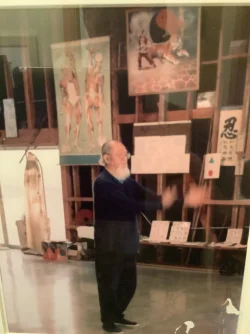This thread is to discuss the ways to power one's martial arts movement. I was originally going to focus only on strikes, but decided to focus on movement instead. This was originally a side discussion in another group so I'll start there. Feel free to discus any mechanics of any system.
To start off here are the power generators
1. Linear Movement
2. Circular Movement
3. Weight Movement (dropping into a strike)
4. Gravity Movement
5. Foot Pivot
6. Foot /leg push
7. Hip twist vs Hip Rotation
8. Waist Twist vs Waist Rotation
9. Torso Twist vs Waist
10, Shoulder Twist vs Shoulder Rotation
11. Arm and leg power generation.
12. Body Rotation
13. Wrist Motion
Before this thread we were only talking about how to power a punch using the Torso, Waist, Shoulder. We were looking at a boxing video on how to generate power. Keep in mind that every system is different and even with in the same system a person may engage all power generators or engage only a few depending on the technique and distance. There is not only one way but many ways. Share your knowledge.

